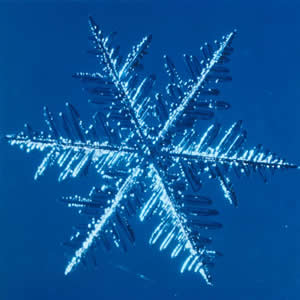Snowflake
Click on image for full size
UCAR
Snow
Snow is a type of precipitation. Water falls from clouds as ice crystals or groups of many ice crystals, called snowflakes. Snowflakes form in clouds where the temperature is below freezing. The ice crystals form around tiny bits of dirt that have been carried up into the atmosphere by the wind. As the snow crystals grow, they become heavier and fall toward Earth. Many snowflakes are six-sided shapes. Different types of snowflakes form in different conditions. Temperature determines if the crystals become a flat plate, a long column, or a prism shape.
On average, 10 inches of snow melt down to about an inch of water; however, not all snow is the same. Very heavy wet snow, which is excellent for making snowballs and snowmen, falls in some places. Light snow, so fluffy that it will not stick together into a snowball shape, falls in other places.
Snow is part of the cryosphere. There are places where snow covers the land surface year-round. These are found at high latitudes, where snow is common and temperatures stay cold year-round, and on mountaintops, where the high altitude causes temperatures to be cold year-round. Recently, the snow cover on some mountaintops, especially mountains at low latitudes, has been shrinking because the Earth is getting warmer.
Last modified January 29, 2007 by Lisa Gardiner.
You might also be interested in:
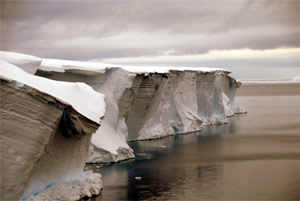
Frozen water is found in many different places on Earth. Snow blankets the ground at mid and high latitudes during winter. Sea ice and icebergs float in the chilly waters of polar oceans. Ice shelves are
...more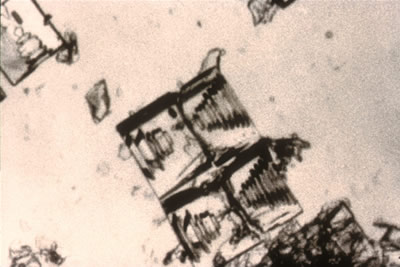
Even though most snowflakes have a hexagonal structure, there are many ways that water molecules can arrange themselves as the water freezes. Some people say that there are no two snowflakes alike. However,
...more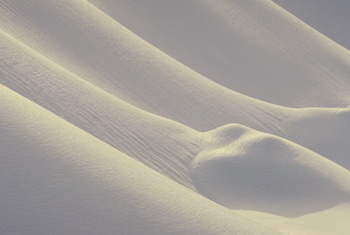
Suppose you saw a giant flash of light in the sky last night. It was so bright that the night almost seemed like day! What would you think it was? Lightning? A UFO? A flash like this happened in Greenland
...more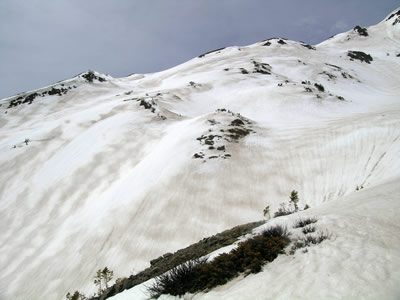
Scientists are learning about how dust from wind storms is affecting the snow in the mountains of Colorado. Occasionally, dry winds blow in from the southwestern United States, and when this happens, small
...more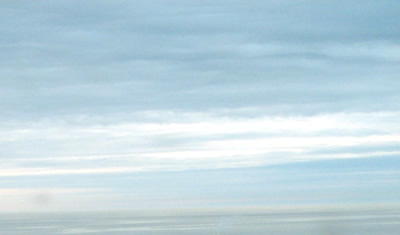
Altostratus clouds belong to the Middle Cloud group. An altostratus cloud usually covers the whole sky. The cloud looks gray or blue-gray. The sun or moon may shine through an altostratus cloud, but will
...more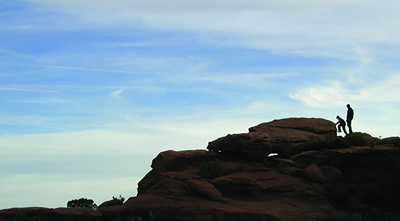
Cirrostratus clouds belong to the High Cloud group. They are sheetlike thin clouds that usually cover the entire sky. The sun or moon can shine through cirrostratus clouds. When looking at the sun through
...more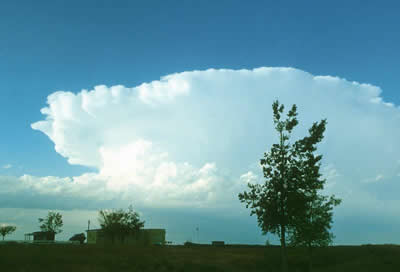
Cumulonimbus clouds belong to the Clouds with Vertical Growth group. They are also known as thunderstorm clouds. A cumulonimbus cloud can grow up to 10km high. At this height, high winds make the top
...more


